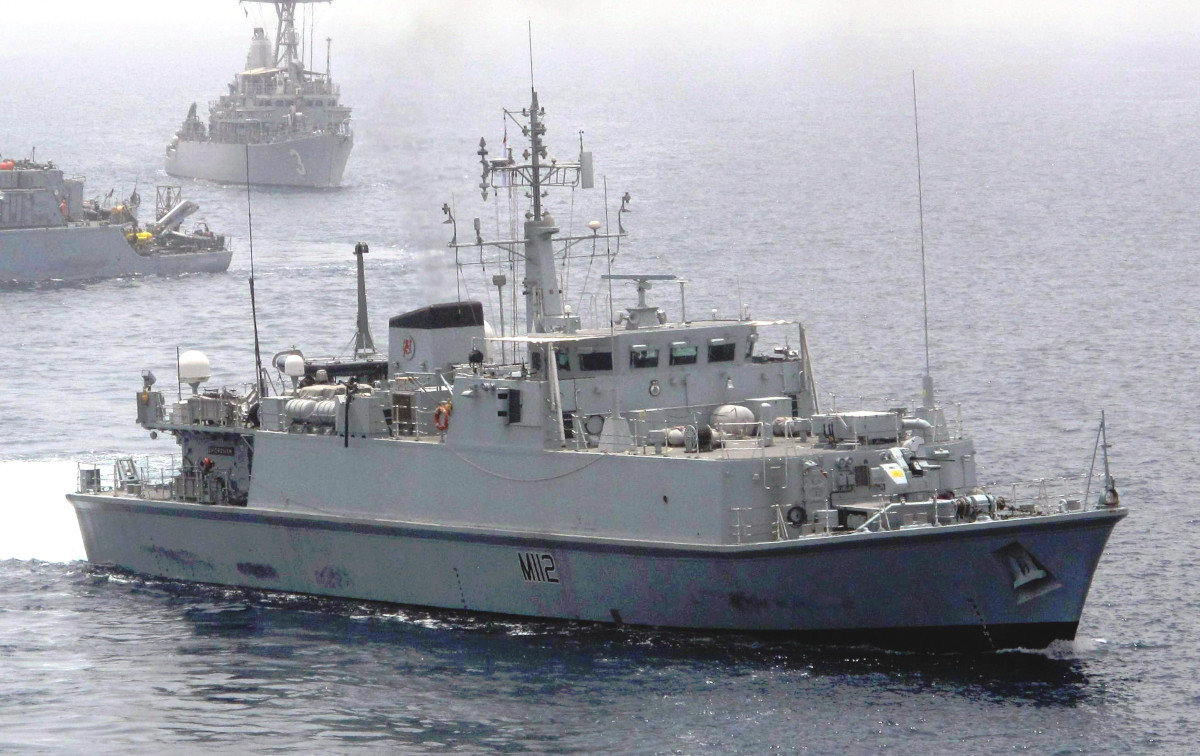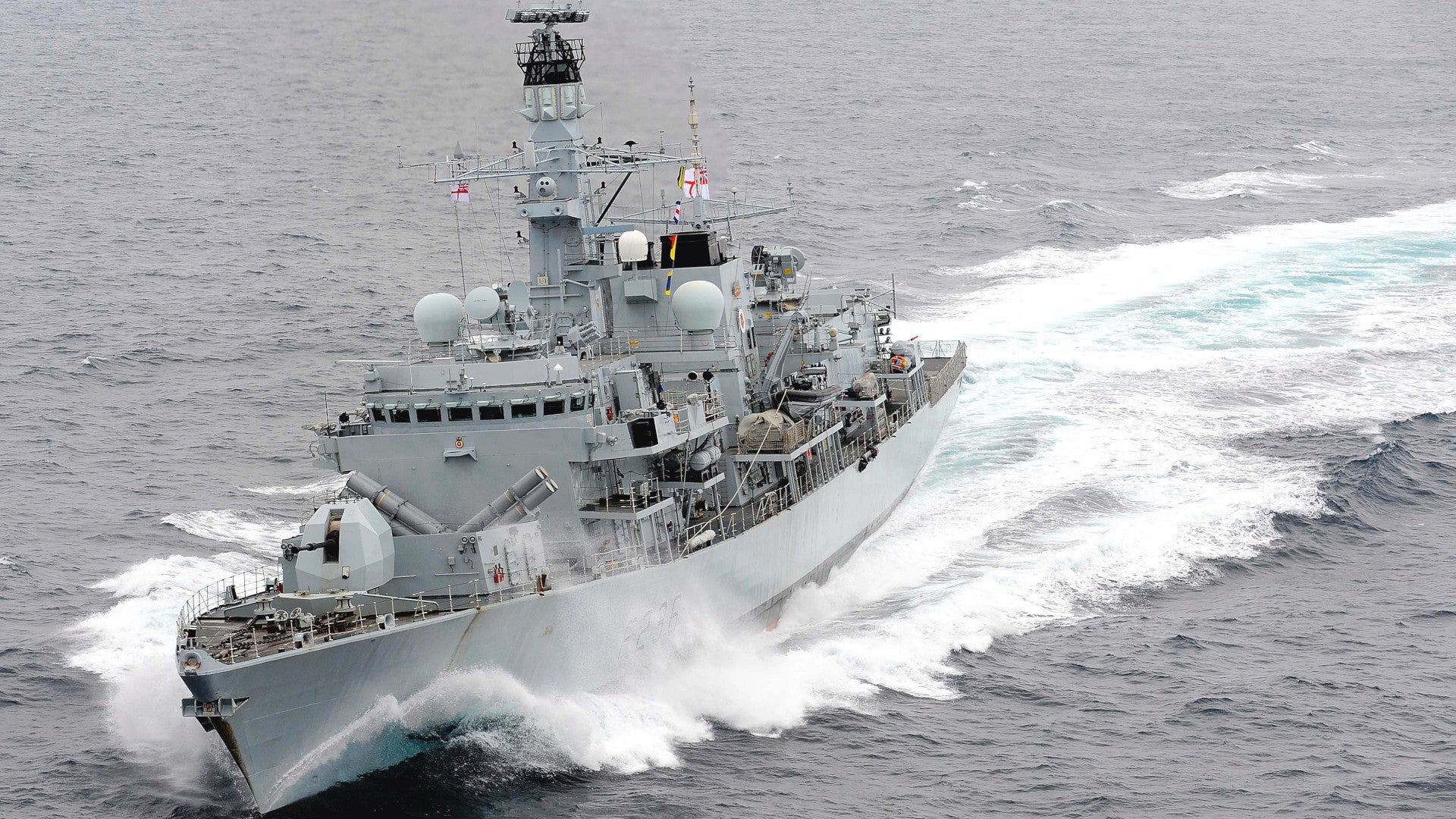The U.K.-flagged tanker Pacific Voyager appears to have had an escort in the form of the Royal Navy’s Type 23 frigate HMS Montrose, along with an unknown Sandown-class minehunter, as she sailed from the Persian Gulf through the Strait of Hormuz into the Gulf of Oman today. This comes less than a week after an Iranian official threatened the seizure of a British ship in retaliation for U.K. officials seizing control of the Iranian supertanker Grace 1 off the coast of Gibraltar.
Online ship trackers first noticed that Montrose, which is forward-deployed to the region, and the minehunter were shadowing Pacific Voyager on July 9, 2019. The minehunter’s transponder appeared to identify it as HMS Ramsey, but that ship is based in the United Kingdom. There are four other members of the Sandown-class that do operate forward-deployed in the region. Pacific Voyager successfully passed through the Strait of Hormuz without incident later in the day.
“The UK maintains a long-standing maritime presence in the Gulf,” a spokesperson for the U.K. Ministry of Defense told the Daily Star, refusing to confirm or deny that any Royal Navy ships were escorting Pacific Voyager. “We are continuously monitoring the security situation there and are committed to maintaining freedom of navigation in accordance with international law.”
The United Kingdom is a contributor to the U.S. Navy-led Combined Task Force 150, which is based in Bahrain and helps ensure freedom of navigation in waterways throughout the Middle East and guards commercial shipping in the region against terrorist attacks and piracy. The U.K. military has dubbed its maritime contributions in the region as Operation Kipion.
The apparent escort the Pacific Voyager follows a threat from Mohsen Rezaei, who is presently the Secretary of Iran’s powerful Expediency Discernment Council, an advisory body to the country’s Supreme Leader Ayatollah Ali Khamenei, to seize a British ship in response to U.K. authorities boarding and taking control of Iran’s Grace 1
over apparent sanctions violations. That incident occurred on July 4, 2019, and Rezaei, who is also a former commander of Iran’s Islamic Revolutionary Guard Corps (IRGC), made his statement the following day.
The U.S. government has blamed the IRGC for carrying out, or otherwise supporting, attacks on a number of oil tankers in the Gulf of Oman in two separate incidents, one in May 2019 and another the following month. The IRGC also claimed responsibility for shooting down a U.S. Navy drone in June 2019, which almost prompted the U.S. military to launch strikes against targets in Iran.
With the situation so tense, Pacific Voyager had already caused a stir after it came to an unexpected stop in the Persian Gulf off the coast of Ras Tanura, Saudi Arabia, raising fears that the IRGC had followed through with Rezaei’s threat. A representative of the United Kingdom Maritime Trade Operations (UKMTO) office subsequently told Reuters that the ship was “safe and well” and that it had paused its voyage simply to ship its estimated time of arrival its next port of call.
It possible that this may have also been in order to allow Montrose and the minehunter to arrive in position. In addition, there’s no indication that naval mines have become an imminent threat in the region and its more likely that the smaller ship simply provided additional security for the tanker during the passage.

On July 8, 2019, another U.K.-flagged tanker, the BP-owned British Heritage, which had been on its way to Basara, Iraq, abruptly changed its plans and dropped anchor off Saudi Arabia. The ship had been under charter to Dutch Royal Shell, but has reportedly canceled its booking and may now be waiting for its own escort out of the region.
The situation underscores the often inherent risks to maritime commerce in the region, despite it being a major transit point for a third of the world’s oil supply and for 90 percent of all energy exports, including natural gas, to destinations outside the Middle East. It also highlights the difficulties that even countries with maritime assets forward-deployed in the region face in responding to major security challenges.
The Royal Navy’s Type 23 frigates are of a now older design, dating back to the late 1980s, but still have significant anti-aircraft, anti-ship, and anti-submarine capabilities. But while Montrose, together with the Sandown-class minehunter, would certainly be able to deter a small force from trying to board a tanker, but the two ships alone might have trouble contending with a larger Iranian contingent riding in a swarm of small boats, especially if coupled with other threats, such as mines, shore-based missiles, and small unmanned aerial vehicles.
With all this in mind, it remains to be seen now whether Montrose and other Royal Navy ships in the region will begin escorting British-flagged commercial vessels regularly, or if those tankers and cargo ships increasingly avoid taking jobs in the region for the foreseeable future over potential Iranian threats.
Contact the author: joe@thedrive.com
